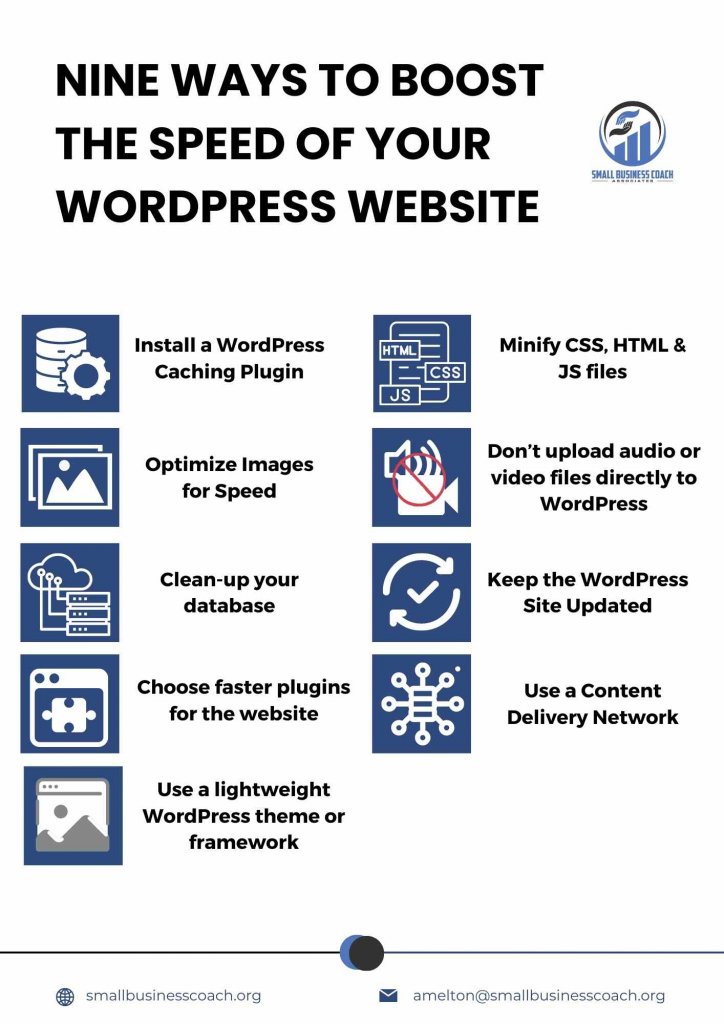What is a SIMPLE Plan?
A SIMPLE plan is a retirement plan that companies can offer to employees, given they have no more than 100 employees. SIMPLE means Savings Incentive Match Plan for Employees of small employers. In insurance, insurance companies often serve as trustees who manage SIMPLE plans on behalf of the employer.
Who Can Start a SIMPLE Plan?
SIMPLE planning can be achieved by employers of not more than 100 employees who earned $5,000 or more in the preceding calendar year. But despite meeting this requirement, if an employer is already sponsoring another retirement plan, they cannot engage in SIMPLE planning.
SIMPLE plans can be sponsored by various business types and organizations, including S-corporations, C-corporations, sole proprietorships, and partnerships. Related employers (businesses under common control, for instance) are categorized and treated as single employers. Even a tax-exempt employer or governmental entity may start a SIMPLE plan insomuch as they meet the basic requirements.
Pros and Cons of SIMPLE Planning
SIMPLE plans are no doubt necessary, with marked advantages and disadvantages. Here are a few advantages and limitations of SIMPLE plans.

Pros of SIMPLE Plans:
Minimal paperwork to set up
There are instances where you can set up a plan online, depending on the provider, and the paperwork associated with SIMPLE planning is essentially less than what you’d be required to fill out for other types of accounts, like a 401(k) plan.
Low start-up and maintenance costs
There are retirement plans that demand costly fees to open and maintain the accounts. With SIMPLE plans, your business typically is demanded lower upfront and managing costs.
Money put into the plan is tax-deductible
It is possible to deduct contributions on tax returns when using SIMPLE plans.
No IRS filing requirements
Your plan provider handles reporting requirements to the IRS.
Cons of SIMPLE Plans
Employer-matching requirement
SIMPLE planning requires businesses to match employee contributions exactly, up to a certain percentage.
Lower contribution limit
The contribution limits placed on SIMPLE plans are lower than those on other retirement accounts. For example, as of 2020, 401(k) plans have a contribution limit of $19,500 and $6,500 for catch-up contributions.
Withdrawing requirements
With SIMPLE plans, you cannot withdraw any money from the account you reach age 59½. If you take money out before then, a 10% penalty and income taxes on your withdrawal will be levied.
No Roth contributions
With SIMPLE plans, there’s no option to have a Roth version of your SIMPLE IRA. So, you can’t fund your account with post-tax money and successfully evade taxes on the money when you withdraw it.
SIMPLE Plans Contributions
SIMPLE planning makes it possible for small businesses to join millions of other employers who have established retirement plans. They also allow some flexibility in the type of contributions employers provide to employees.
Employees contribute to SIMPLE plans by establishing and consenting to a salary reduction from each paycheck, as much as $6,000 a calendar year. Contributing employees receive a matching contribution that is equal to their salary reduction contribution (i.e., up to 3 percent of their pay).
Alternatively, employers may institute a “non-elective” or fixed contribution of 2 percent of pay for eligible employees. It is also acceptable for employers to reduce the matching contribution amount to a limit of one percent of compensation, but certain restrictions will apply to this choice.
Trustees execute SIMPLE plans, and the contributions towards SIMPLE plans are transferable from one SIMPLE plan to another tax-free SIMPLE plan in a trustee-to-trustee transfer. However, to effect such a transfer to tax-free contributions in another type f retirement plan, there is a 2-year waiting period after the employee first enrolls in the SIMPLE plan. Until this 2-year period elapses, any transfer from a SIMPLE IRA to an IRA other than a SIMPLE IRA will incur tax repercussions.

Employee Elections
When it comes to SIMPLE planning, everything is based on a calendar year, except in a situation where an employer initially sets up a SIMPLE plan effective as late as October 1 of the calendar year. At least once a year, employees must be offered the chance to enter into a SIMPLE plan salary reduction agreement. Election periods must last at least 60-days, and employees must receive notice about an upcoming enrolment opportunity before the stipulated period for the election.
Other election features
Election periods should fall annually before January 1 of each calendar year (i.e., November 2 to December 31). Another suitable date range can be chosen given that there is more flexibility with the election period requirement when a SIMPLE plan is initially established.
There is room for employees to make a new salary reduction agreement during the election period or modify a prior agreement. A copy of the SIMPLE plan’s “summary description” must be sent to employees when they receive notice about the election period.
There is also room for employees to elect a termination of their salary reduction contribution towards a SIMPLE plan whenever they so choose. However, suppose employees opt to end their contributions at a time other than a designated election period. In that case, employers may preclude them from participating again until the commencement of the following calendar year. Employees may also be allowed to select the financial establishments they would like to receive their SIMPLE plan contributions during their election periods.
Notification Requirements
Employers should give each year’s notice about the enrolment period, and they should ensure to:
- Include a copy of the summary description of the terms of the SIMPLE plan. They may achieve this by providing a completed copy of IRS Forms 5304-SIMPLE or 5305-SIMPLE, and this includes the procedures set in place by the financial institutions for withdrawals.
- Provide information on the employer’s method in contributing to employees’ SIMPLE plans, for example, whether they would match employee contributions by up to 3% of their pay or by some other authorized method.
- Specify to employees that they can choose their financial institutions to serve as trustees for their SIMPLE plans. If the employer takes the responsibility of deciding the financial institution to receive contributions for all employees under the SIMPLE plan, then be sure to include this information, stipulating that employees have the right to transfer their contributions to a SIMPLE plan at another financial institution, and this should incur them no cost or penalty whatsoever.
There are two additional facets of notification employers should consider:
- Mention that employers may provide extended periods of election time to their employees (for instance, extending the election period to 90 days or providing quarterly or semi-annual election periods).
- Employers should also mention there are substantial penalties for failure to notify employees before an election period.
Trustee Requirements
A critical aspect of SIMPLE planning is choosing a financial institution to maintain employees’ plans. This is, perhaps, one of the most essential decisions employers or employees will make regarding SIMPLE planning. Trustees work closely with employers to receive their contributions, invest those contributions and issue certain required information. Within the confines of SIMPLE planning, some types of institutions can be designated as trustees: banks, savings and loan associations, insurance companies (that issue annuity contracts), insured credit unions, or IRS-approved non-bank trustees.
Trustees must agree to:
- Accept and deposit contributions.
- Detail and make available to the employer a summary description each year that includes:
- the specific name and address of the employer and trustee;
- a detailed description of eligibility requirements;
- a the specific benefits provided;
- a the time and method of making salary elections; the procedure for and effects of withdrawals and rollovers (including the penalties for early withdrawals).
There are three additional trustee requirements:
- the trustee must provide a statement of the account balance and activity of the account for the year within 30 days after the close of each calendar year to the individual.
- The trustee reports SIMPLE plan information to the IRS, the same as with any IRA account.
- A trustee that is a “designated financial institution” by agreement with the employer should also agree to transfer, upon request, an individual’s SIMPLE plan balance to another IRA or SIMPLE plan IRA without cost or penalty to the individual.
How to Start SIMPLE Plans
To start up a SIMPLE plan, here’s a step-by-step approach:
- Choose a financial institution
- Develop a written agreement to provide benefits to all eligible employees
- Give employees specific details about the above agreement
- Set up an IRA account for each employee
Choose a Financial Institution
SIMPLE planning requires choosing a financial institution to serve as trustee of the SIMPLE plan to hold each employee’s/participant’s retirement plan assets. These set-up accounts will receive the contributions you make to the plan. Another route would be to allow employees to choose the financial institutions that will receive their contributions.
Execute a Written Agreement
You can use forms to set up a SIMPLE plan. You can make use of SIMPLE form templates or prototype documents from a mutual fund, insurance company, bank, or other qualified, as well as an individually designed plan. These documents detail the SIMPLE plan and may not be filed with the IRS.
Annual Notice to Eligible Employees
You must notify each employee before the start of an election period of:
- The employee’s right to make or change a salary reduction choice under the SIMPLE plan;
- The employees’ ability to choose any financial institution as a trustee of the employees’ SIMPLE plan;
- The choice to make either matching contributions or non-elective contributions;
- A summary description (usually provided by the financial institution); and
- A written notice that the employee can freely transfer their balance without cost or penalty if they opt for the employer’s default institution.
Set Up a SIMPLE IRA for Eligible Employees
A SIMPLE plan must be set up by or for each eligible employee, and all contributions to the plan must go into the SIMPLE plan.

When to Set Up a SIMPLE Plan
SIMPLE planning can occur at any time from January 1 through October 1 of a year, provided you didn’t previously maintain a plan. But this requirement doesn’t apply in the case where you were stepped in as an employer after October 1, taking over from one who had already instated a SIMPLE plan. In this case, you can freely set up another SIMPLE plan as soon as it’s administratively feasible after your business comes into existence. In the case where you had previously maintained a SIMPLE IRA plan, then you can set up a SIMPLE IRA plan only on January 1 of a year. A SIMPLE plan cannot have an effective date before the date you adopt the plan.
Eligibility to Participate in a SIMPLE Plan
An employee (including a self-employed individual) can participate in a SIMPLE plan if they
- earned at least $5,000 in compensation during any two years before the current calendar year and
- anticipates receiving at least $5,000 during the current calendar year.
When it comes to SIMPLE planning and implementation of requirements, employers can sway towards less restrictive than more restrictive measures. Employers can’t impose conditions for participating in a SIMPLE IRA plan.
However, an employer can exclude the following employees from a SIMPLE IRA plan:
- Those employees covered by a union agreement and whose retirement benefits were bargained for in good faith by the employees’ union and the employer
- Non-resident alien employees who lack U.S. wages, salaries, or other personal services compensation from the employer.
Operation and Maintenance of a SIMPLE Plan
Having stipulated the persons eligible to create and participate in a SIMPLE plan and the basic steps involved in creating a SIMPLE plan, it is imperative to outline some critical operational questions to answer SIMPLE planning worries.
What are the contribution rules?
SIMPLE plan trustees are responsible for holding the contributions made for each eligible employee. A SIMPLE IRA is funded by:
- Annual employee salary reduction contributions (elective deferrals), which is limited to $13,500
- For employees age 50 or over, a $3,000 “catch-up” contribution is also allowed
Employer contributions
It is up to the employer to choose annually one of the contribution methods listed below and inform employees of the various contribution methods, letting them decide which method they would use for the following year.
- 2% non-elective contribution: In this case, 2% of each eligible employee’s compensation (salary) is deferred, regardless of whether or how much the employee deferred.
- 3% matching contribution: This involves matching the employee’s elective deferrals on a dollar-for-dollar basis up to 3% of the employee’s compensation.
- The employer may reduce the 3% limit to a lower percentage, but such deductions may not go lower than 1%. The figure may not go lower the 3% limit for more than two calendar years out of the five years ending with the calendar year the reduction is effective. The employer isn’t allowed to make any other contributions to a SIMPLE plan.
When deciding employer contributions, you must follow the definition of compensation as stated in the plan document. Compensation generally refers to the pay an individual receives from you for services rendered that year.
Automatic Enrollment: this feature allows an employer to deduct a fixed percentage or amount from an employee’s wages and contribute that to the SIMPLE plan without the express attention of the employee at each deduction unless the employee chooses to contribute nothing or to contribute a different amount. These automatic enrollment contributions qualify to be classified as elective deferrals.
Annual Election Period: Employees can change their contribution levels each year during the plan’s election period. Such election periods must last at least 60 days, and employees must receive prior notice about an upcoming election opportunity.
When employees want to stop contributions
With SIMPLE planning, employees can opt to terminate their salary reduction contributions to a SIMPLE plan at any time. If they choose to do so, the SIMPLE IRA may preclude them from resuming salary reduction contributions until the next calendar year begins. In such cases, the employers must continue to make those non-elective deductions on behalf of these employees.
Where are contributions deposited?
Once you send the plan contributions to the financial institution you selected, that institution takes on the charge of managing the funds. Employees can move their SIMPLE plan assets from one SIMPLE plan trustee to another. SIMPLE plan contributions can be invested in individual stocks, mutual funds, and other similar types of investments. It is up to the employee to make the investment decisions for their account.
S an employer, you’ll need to give each participating employee an annual statement that clearly shows the amount contributed to the employee’s account for that year.
When must contributions be deposited?
Employee salary reduction contributions: These contributions should be effected within 30 days after the end of the month. The amounts would otherwise have been payable to the employee (and self-employed individuals) in cash.
Employer matching or non-elective contributions: These contributions should be made by the due date (including extensions) for filing your federal income tax return for the year
Who owns SIMPLE IRA contributions?
Contributions to SIMPLE planning accounts are always entirely vested or owned by the employee.
What are the basic withdrawal rules?
Contributions and earnings can be withdrawn at any time. A withdrawal is taxable in the year it is received. If a participant in a SIMPLE plan chooses to withdraw before they attain age 59 ½, a 10% additional tax generally applies. If this withdrawal occurs within the first two years of participation, the tax is raised from 10% to 25%.
When a participant withdraws funds from a SIMPLE plan, the IRA may continue participating in the employer’s plan. The result of all contributions and earnings from SIMPLE plans is that they would be distributed in line with SIMPLE plan distribution rules.
Rollovers
SIMPLE plan contributions and earnings may be rolled over from one trustee to another with tax-free repercussions. A tax-free rollover may also be possible for a swap from a SIMPLE plan to a plan that is not a SIMPLE plan, but this can only be possible after at least two years of participation in the SIMPLE plan.
Participant loans
SIMPLE planning does not permit loans. However, SIMPLE plan accounts allow withdrawals as they are IRA accounts.
How to ensure your SIMPLE plan is operating within the rules?
It is essential to set up cheeks to ensure your SIMPLE plan operates within intended rules and boundaries. You should conduct an annual self-audit concerning your SIMPLE plan.
Other than the first year you set up your plan, SIMPLE plans must be maintained for a whole calendar year. Once SIMPLE plans are operational, you must continue your SIMPLE plan for the entire calendar year and funding all contributions promised in the employee notice.
If you decide your SIMPLE plan no longer suits your business, it is possible to terminate the SIMPLE plan.
How do I terminate my SIMPLE plan?
While SIMPLE planning is great, you may want to terminate an existing SIMPLE Plan. Here’s what to do:
Step 1: Inform your employees within a reasonable time before November 2 that the SIMPLE plan would be discontinued effective the following January 1.
Step 2: Notify your SIMPLE plan’s financial institution and payroll provider that you want to terminate your contributions, and you won’t be making SIMPLE plan contributions for the following calendar year.
Step 3: It is essential you keep records of your actions, but you don’t need to notify the IRS that you have terminated the SIMPLE plan.
So there you have it. To read more about getting help with you finances, check out this article about ways a financial advisor can help your business.



 “I was initially hesitant to take on a business coach, but now I’m glad I did. Since Alan and I began working together my sales have increased significantly and I’m glad to use his services. My profits have increased an average of 50%.” David, Founder, Law Firm
“I was initially hesitant to take on a business coach, but now I’m glad I did. Since Alan and I began working together my sales have increased significantly and I’m glad to use his services. My profits have increased an average of 50%.” David, Founder, Law Firm






















 Short term Goals Examples
Short term Goals Examples




















